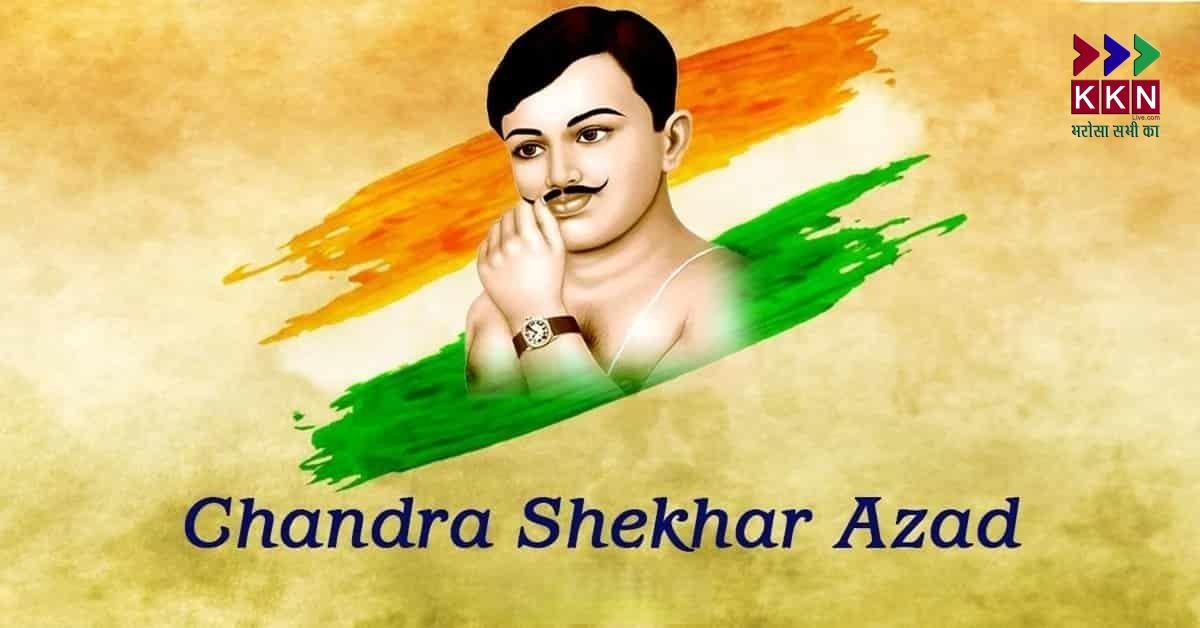
The Prime Minister of India paid heartfelt tributes to Chandra Shekhar Azad on his birth anniversary. Remembered as a fearless freedom fighter, Azad’s contribution to India’s independence struggle remains iconic. His revolutionary spirit continues to inspire generations of Indians, particularly youth committed to patriotism and social justice.
Early Life and Influences That Shaped His Ideology
Chandra Shekhar Azad was born on 23rd July 1906 in Bhabra, a town now in Madhya Pradesh. He grew up during British rule and was deeply disturbed by the Jallianwala Bagh massacre in 1919. That event left a lasting impression on the young Azad and motivated him to join the independence movement. He was just a teenager when he entered politics.
In 1921, Azad participated in the Non-Cooperation Movement launched by Mahatma Gandhi. However, after the movement was called off in 1922 due to the Chauri Chaura incident, many young revolutionaries, including Azad, lost faith in non-violent methods.
From Non-Cooperation to Armed Revolution
With non-violence proving ineffective for many youth at the time, Azad aligned himself with a group of revolutionaries. He joined the Hindustan Republican Association (HRA), a secret revolutionary organization. HRA aimed to overthrow the British colonial regime through armed rebellion.
The HRA was founded in 1924 in Kanpur by Sachindra Nath Sanyal, Ram Prasad Bismil, and Jogesh Chandra Chatterjee. It soon attracted passionate young patriots like Bhagat Singh, Rajendra Lahiri, Sukhdev, and Roshan Singh. Chandra Shekhar Azad emerged as one of its most daring members.
Transition to the Hindustan Socialist Republican Army (HSRA)
In 1928, the HRA was reorganized into the Hindustan Socialist Republican Army (HSRA). The aim was now not just independence, but also the establishment of a socialist India. Azad played a central role in this transformation. Alongside leaders like Bhagat Singh, Ashfaqulla Khan, and Sukhdev Thapar, he laid down the ideological framework of the HSRA.
The foundation of HSRA was laid at Feroz Shah Kotla in New Delhi. This historic gathering marked a new era of revolutionary activism in colonial India. The group adopted more organized, daring, and ideologically-driven strategies to challenge British power.
Revolutionary Acts That Shook the British Empire
Chandra Shekhar Azad was not just a planner but also an active executor of revolutionary missions. One of the most notable was the Kakori Train Robbery of 1925, which aimed to fund revolutionary activities by seizing government money.
In 1928, after the brutal lathi charge that led to Lala Lajpat Rai’s death, Azad and his associates took swift revenge. They assassinated British police officer JP Saunders in Lahore. This act became a milestone in India’s revolutionary history.
In 1929, Azad and his comrades attempted to blow up the train of Viceroy Lord Irwin, the British Crown’s highest representative in India. Though the attempt was unsuccessful, it marked the audacity and commitment of Azad’s group to challenge British authority at its core.
A Heroic Death That Cemented His Legacy
Azad believed in the principle that he would never be taken alive by the British. On 27th February 1931, he was surrounded by British police in Alfred Park, Allahabad (now Prayagraj). Refusing to surrender, he fought valiantly until he had only one bullet left. True to his vow, he used that final bullet on himself rather than be captured.
This ultimate act of defiance immortalized him in Indian history. Alfred Park, where he breathed his last, was later renamed Chandra Shekhar Azad Park to honor his sacrifice.
His Ideals and Influence on India’s Freedom Struggle
Azad’s influence extended beyond direct action. He mentored many revolutionaries, including Bhagat Singh, who went on to become a national hero. Azad’s life symbolized courage, sacrifice, and the vision of a free, equitable India. His belief in socialist ideals added a strong ideological base to India’s revolutionary stream.
Even though mainstream political leaders pursued non-violent struggle, Azad and his companions kept the spirit of armed resistance alive. They believed in justice through action, and their efforts inspired countless Indians to rise against colonial oppression.
National Recognition and Cultural Impact
India has formally recognized Chandra Shekhar Azad’s contributions in many ways. His name is etched in history books and commemorated through stamps, statues, and street names. Numerous educational institutions are named after him. His legacy is often remembered during Republic Day and Independence Day celebrations.
Azad’s story has been portrayed in books, documentaries, and films. These narratives ensure his memory continues to influence the patriotic spirit of younger generations. His iconic photograph with a curved moustache and intense eyes has become a symbol of defiance.
Prime Minister’s Tribute Reflects National Sentiment
On 23rd July 2025, the Prime Minister paid homage to Azad, acknowledging his unmatched bravery and contribution. The PM highlighted how Azad’s sacrifices remain a guiding force for the nation, especially at a time when patriotism and social responsibility are being redefined.
The tribute also encouraged citizens to study and embrace Azad’s values of fearlessness, selflessness, and national service. The government reiterated its commitment to upholding the ideals for which Azad laid down his life.
Why Chandra Shekhar Azad Remains Relevant Today
In a world where materialism often dominates public life, Azad’s example of self-sacrifice stands out. He fought not for power, but for justice, equality, and freedom. His message still resonates with youth involved in activism, civil rights, and nation-building.
As India continues to grow as a democratic republic, remembering Azad serves as a moral compass. His fight was not just against the British but also against social injustice and inequality. That vision remains incomplete, and his ideals offer direction for future progress.
Chandra Shekhar Azad’s story is one of extraordinary courage and clarity of purpose. He dared to dream of an India free from colonial chains and took bold actions to achieve it. His life and death remain one of the most poignant chapters in India’s freedom struggle.


